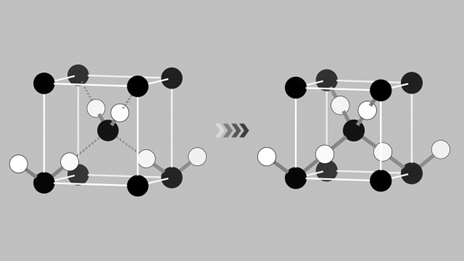DATE2024.06.27 #Press Releases
What happens when water is compressed to the extreme?
First Success of the Direct Observation of Hydrogen Bond Symmetrisation by High-Pressure Neutron Diffraction Experiment
Summary
Associate Prof. Kazuki Komatsu, Graduate Student Keishiro Yamashita (at the time), Graduate Student Hayate Ito, Graduate Student Hiroki Kobayashi, Prof. Hiroyuki Kagi, at Geochemical Reseaerch Center, Graduate School of Science, The University of Tokyo; Principal Researcher Takanori Hattori, Principal Researcher Asami Sano-Furukawa, at J-PARC Center, Japan Atomic Energy Agency (JAEA); Associate Principal Researcher, Shinichi Machida, at Neutron Science and Technology Center, Comprehensive Research Organization for Science and Society (CROSS); Prof. Tetsuo Irifune, Associate Prof./Senior Lab Manager Toru Shinmei, at Geodynamics Research Center, Ehime University; and Prof. Stefan Klotz at the Sorbonne University/CNRS has performed the world's first neutron powder diffraction study of ice up to pressures exceeding 100 GPa. The structure analysis for the obtained neutron diffraction patterns revealed that the symmetrisation of hydrogen bonds at pressures above 80 GPa. The results of this study are not only significant in the physical chemistry research of ice, but will also contribute to the understanding for the state of water and ice in the interior of the earth and icy bodies in the future.

Figure : Schematic diagram showing symmetrisation of hydrogen bonds in ice (black circles indicate oxygen atoms and white circles indicate hydrogen atoms).
Links:
JAEA, J-PARC Center, CROSS, Ehime University.(in Japanese)
Journals
-
Journal name Nature Communications Title of paper


